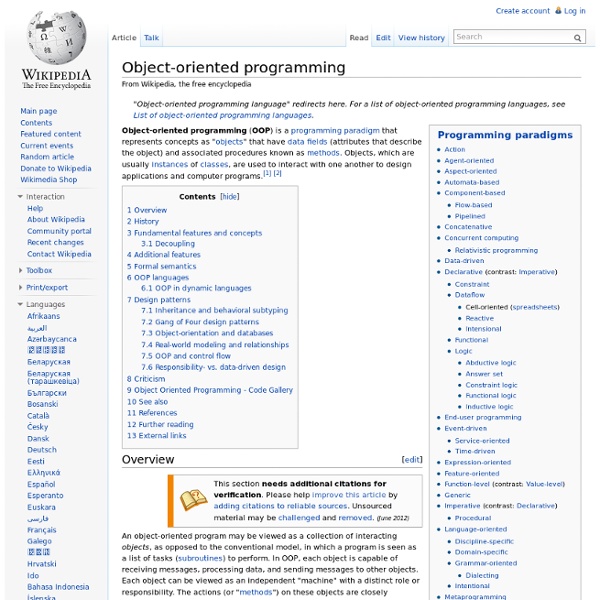Human–computer interaction
A woman teaching girls in Afghanistan how to use computers. Human use of computers is a major focus of the field of HCI. Because human–computer interaction studies a human and a machine in conjunction, it draws from supporting knowledge on both the machine and the human side. On the machine side, techniques in computer graphics, operating systems, programming languages, and development environments are relevant. On the human side, communication theory, graphic and industrial design disciplines, linguistics, social sciences, cognitive psychology, social psychology, and human factors such as computer user satisfaction are relevant. Poorly designed human-machine interfaces can lead to many unexpected problems. HCI Goals[edit] HCI (Human Computer Interaction) aims to improve the interactions between users and computers by making computers more usable and receptive to users' needs. Differences with related fields[edit] Design[edit] Principles[edit] Methodologies[edit] Display designs[edit] 1. 2.
Information technology
Information technology (IT) is the application of computers and telecommunications equipment to store, retrieve, transmit and manipulate data,[1] often in the context of a business or other enterprise.[2] The term is commonly used as a synonym for computers and computer networks, but it also encompasses other information distribution technologies such as television and telephones. Several industries are associated with information technology, including computer hardware, software, electronics, semiconductors, internet, telecom equipment, e-commerce and computer services.[3][a] Humans have been storing, retrieving, manipulating and communicating information since the Sumerians in Mesopotamia developed writing in about 3000 BC,[5] but the term information technology in its modern sense first appeared in a 1958 article published in the Harvard Business Review; authors Harold J. History of computer technology[edit] Data storage[edit] Databases[edit] Data retrieval[edit] Data transmission[edit]
Acid3
Acid3 test is a web test page from the Web Standards Project that checks a web browser's compliance with elements of various web standards, particularly the Document Object Model (DOM) and JavaScript. Acid3 was in development from April 2007,[1] and released on 3 March 2008.[2] The main developer was Ian Hickson, a Google employee who also wrote the Acid2 test. Acid2 focused primarily on Cascading Style Sheets (CSS), but this third Acid test also focuses on technologies used on modern, highly interactive websites characteristic of Web 2.0, such as ECMAScript and DOM Level 2. A few subtests also concern Scalable Vector Graphics (SVG), Extensible Markup Language (XML), and data URIs. The test[edit] The main part of Acid3 is written in ECMAScript (JavaScript) and consists of 100 subtests in six groups called “buckets”, including four special subtests (0, 97, 98, and 99).[3] The compliance criteria require that the test be run with a browser's default settings. Detailed results[edit]
Google Native Client
Portable Native Client (PNaCl) is an architecture-independent version. PNaCl apps are compiled ahead-of-time. PNaCl is recommended over NaCl for most use cases.[6] The general concept of NaCl (running native code in web browser) has been implemented before in ActiveX, which, while still in use, has full access to the system (disk, memory, user-interface, registry, etc.). Native Client avoids this issue by using sandboxing. On October 12, 2016, a comment on the Chromium issue tracker indicated that Google's Pepper and Native Client teams had been destaffed.[7] On May 30, 2017, Google announced deprecation of PNaCl in favor of WebAssembly.[8] Although initially Google planned to remove PNaCl in first quarter of 2018,[8] and later in the second quarter of 2019,[9] it is currently planned for removal in June 2022 (together with Chrome Apps).[10] Overview[edit] An ARM implementation was released in March 2010.[20] x86-64, IA-32, and MIPS are also supported. Pepper[edit] PPAPI[edit] See also[edit]



